APHG, Unit 3: Cultural Patterns and Processes Cumulative
1/215
There's no tags or description
Looks like no tags are added yet.
Name | Mastery | Learn | Test | Matching | Spaced |
|---|
No study sessions yet.
216 Terms
Creole languages
A language that results from the mixing of the colonizer's language with the indigenous language of the people being dominated. These are romance languages spoken in some former colonies that can also be classified as separate languages because they differ substantially from the original introduced by European colonizers. Examples include French Creole in Haiti, Papiamento (creolized Spanish) in Netherlands Antilles (West Indies), and Portuguese Creole in the Cape Verde Islands off the African coast.
Basque
An isolated European language that is the only language currently spoken in Europe that survives from the period before the arrival of Indo-European speakers. It is now the first language of 666,000 people in the Pyrenees Mountains of northern Spain and southwestern France. It's lack of connection to other languages reflects the isolation of the people in these mountains. This isolation has helped them preserve their language.
Icelandic
a language related to other languages in the North Germanic Group of the Germanic branch of the Indo-European family. It's significance is that, over the past 1,000 years, it has changed less than any other language in the Germanic branch due to the isolation of its speakers.
Koro Aka
Researchers from Ethnologue concluded that this language is a distinct language in India and that it belongs to the Tibeto-Burman branch of Sino-Tibetan, but they were not able to classify it in a group. It has around 1,000 speakers and is located in northeastern India.
extinct languages
languages that were once in use, even in the recent past, but are no longer spoken or read in daily activities by anyone in the world.
EXAMPLES:
- Native American languages (74 of them)
- Peru's indigenous languages
- Gothic (an old Eastern/Northern European language): the last speakers of this language lived in Crimea in the 16th century; many switched to speaking Latin after their conversion to Christianity
Hebrew
a once-extinct language that has been revived through readings of the Jewish Bible as part of Jewish cultural efforts; the revival was initiated by Eliezer Ben-Yehuda, who lived in Palestine before the creation of the state of Israel.
Celtic
A branch of Indo-European with two groups: Goidelic (Gaelic) and Brythonic. Five of these languages are in danger of becoming extinct languages.
1. Welsh (Brythonic)--spoken mostly in Wales, just north of England
2. Irish--one of the two official languages of Ireland (English is the other); many people are learning English instead because it's easier to get jobs outside of Ireland
3. Breton--spoken in Brittany, an isolated peninsula that juts out into the Atlantic Ocean off the English isle; it has more French words than other languages of this branch
4. Scottish--spoken by only 1 percent of the people in Scotland; it is the language in which "Auld Lang Syne," a poem that inspired the New Year's song, was originally written
5. Cornish--became extinct in 1777 but has since been revived (1920s) since it is now taught in grade schools and adult evening courses
Middle Atlantic housing hearth (USA)
The principal house type was known as the "I"-house, typically two full stories in height, one room deep and at least two rooms wide. This type was carried by migrants westward across the Ohio Valley and southwestward along the Appalachian trails.

Maori
The native language of the native inhabitants of New Zealand; New Zealand has adopted policies in an attempt to preserve this language
Aboriginal Australian
The language of the native inhabitants of Australia; there have been attempts to preserve this language, but schools mostly teach English.
Lower Chesapeake/Tidewater housing hearth (USA)
This style typically comprised one story, with a steep room and chimneys at either end. Migrants spread these houses from the Virginia area after which the type is named along the Southeast Coast. In wet areas, houses in the coastal southeast were often raised on piers or on brick foundations.

New England housing hearth (USA)
The distinctive style was box shaped with a central hall. This house type can be found throughout the Great Lakes region as far west as Wisconsin because this area was settled primarily by migrants from New England.
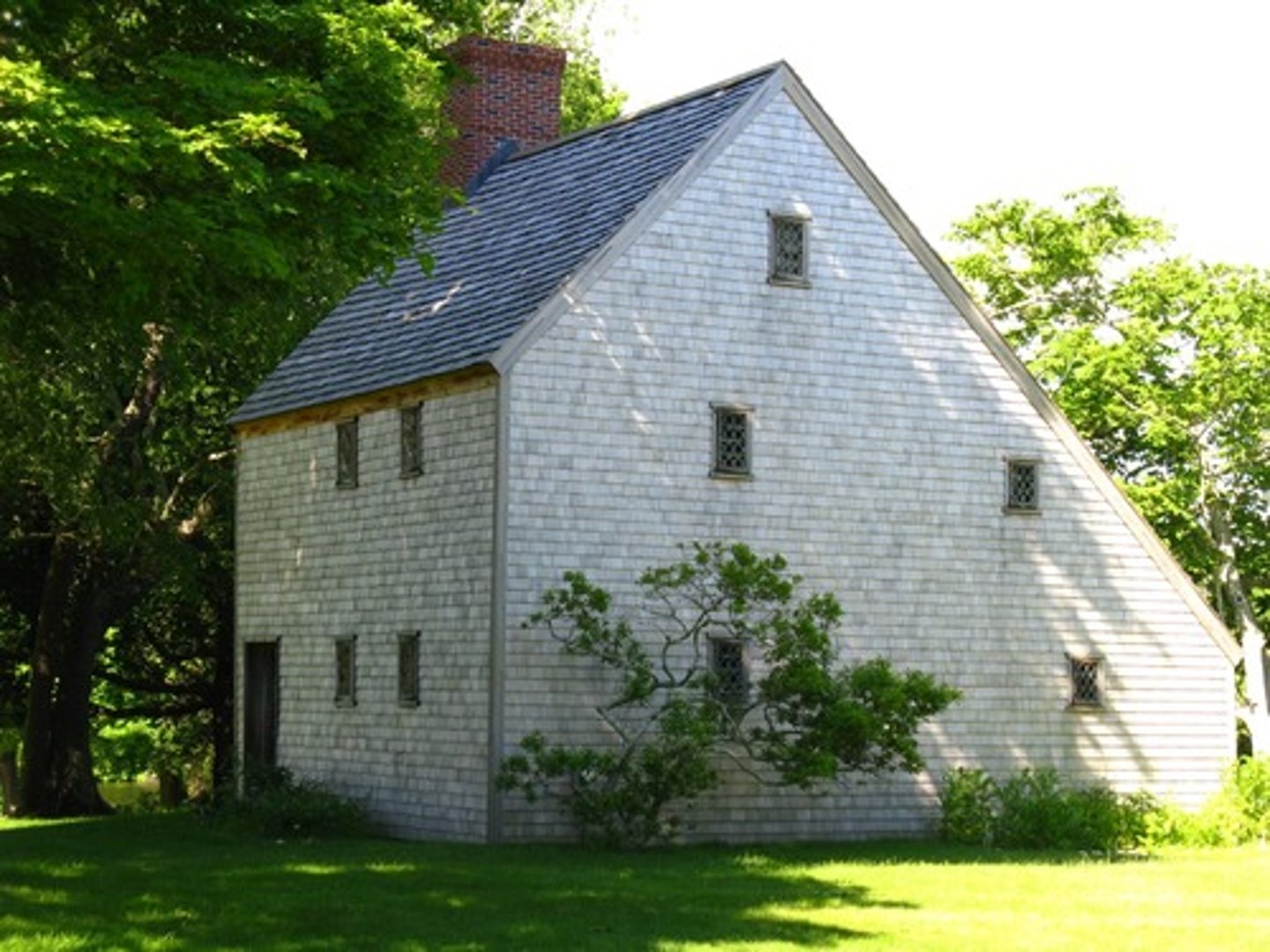
Occitan
a language spoken by about 2 million people in southern France and adjacent countries. There are many dialects of this language including Auvergnat, Gascon, and Provencal. In the region of France that speaks this language, the government has started schools and other efforts to support the preservation of this language.
lingua franca
a language of international communication, usually used to facilitate trade/business
EX: English, Swahili, Arabic, French, Mandarin
pidgin language
a simplified form of a lingua franca, which mixes words from one's native language with the lingua franca
Two ways that expansion diffusion has occurred in English
1. English is changing through diffusion of new vocabulary, spelling and pronunciation.
2. English words are fusing with other languages.
Ebonics/African American Vernacular English
a dialect of English spoken by some African Americans
Universalizing religions
a religion that attempts to appeal to all people, not just those living in a particular location
Ethnic religions
a religion with a relatively concentrated spatial distribution whose principles are likely to be based on the physical characteristics of the particular location in which its adherents are concentrated.
atheism
the belief that God does not exist
agnosticism
the belief that nothing can be known about whether God exists
branch (of a religion)
a large and fundamental division within a religion
sect
a relatively small group that has broken away from an established denomination
Orthodox Christianity
the branch of Christianity usually practiced in Eastern Europe and the MIddle East; it includes the Russian Orthodox Church and 13 other self-governing churches
Catholicism
The original Christian church; it is headed up by the Pope in Rome, and the leaders of individual, local churches are called priests.
Protestant Christianity
A branch of Christianity with individual denominations rather than central leadership. It was initiated by Martin Luther in 1517, when he posted his 95 disagreements with the Catholic Church on the door of his church.
Sunni
A branch of Islam whose name comes from the Arabic for, "people following the example of Muhammad." They comprise 83 percent of Muslims and are the largest branch in most Muslim countries in Southwest Asia and North Africa.
Shiite
A branch of Islam whose name comes from the Arabic word for, "sectarian." They comprise 16 percent of Muslims, clustered in a handful of countries. Nearly 30 percent of all of this group lives in Iran, 15 percent in Pakistan, and 10 percent in Iraq. They comprise nearly 90 percent of the population in Iran and more than half the population in Azerbaijan, Iraq, and the less populous countries of Oman and Bahrain
Mahayana
A branch of Buddhism that split from Theravada Buddhism about 2,000 years ago. The name of this branch translates, "the great vehicle," and followers call Theravada by the name, "HINAYANA," which means, "the inferior vehicle." Followers of this branch claim that their approach to Buddhism can help more people because it is less demanding and all-encompassing. They emphasize Buddha's later years of teaching and helping others. They cite Buddha's compassion as his most prominent characteristic.
Theravada
A branch of Buddhism that is the older of the two larger branches (the other large branch is Mahayana). The name of this branch means, "the way of the elders," indicating that those who are a part of this branch believe that they are closer to Buddha's original approach. They believe that Buddhism is a full-time occupation, so to become a good Buddhist, one must renounce worldly goods and become a monk, They also emphasize Buddha's life of self-help and years of solitary introspection. They also cite Buddha's wisdom as his most prominent characteristic.
Vajrayana
A branch of Buddhism that emphasizes the practice of rituals, known as Tantras, which have been recorded in texts. They believe that Buddha began to practice Tantras during his lifetime, although other Buddhists regard this branch as an approach to Buddhism that evolved from Mahayana Buddhism several centuries later.
Confucianism
A traditional Chinese religion centered around the teachings of Confucius, a philosopher and teacher in the Chinese province of Lu. His sayings, which were recorded by his students, emphasized the importance of the ancient Chinese tradition of li, which can be translated roughly as, "propriety" or "correct behavior." It was also concerned with the ideas of ethical, orderly conduct, following traditions, and fulfilling obligations, specifically the obligation of respect for one's elders.
Taoism
A traditional Chinese religion organized by Lao-Zi (Lao Tse). Although a government administrator by profession, Lao-Zi's writings emphasized the mystical and magical aspects of life rather than the importance of public service, which Confucius had emphasized. The meaning of this term is "The way" or "the path."
spiritism
the belief that the human personality continues to exist after death and can communicate with the living through the agency of a medium or psychic; primarily practiced in Brazil
monotheism
the belief that there is only one god
polytheism
the belief that there are many gods
Buddhism's Four Noble Truths
1. All living beings must endure suffering.
2. Suffering, which is caused by a desire to live, leads to reincarnation (repeated rebirth in new bodies or forms of life).
3. The goal of all existence is to escape suffering and the endless cycle of reincarnation into Nirvana (a state of complete redemption), which is achieved through mental and moral self-purification.
4. Nirvana is attained through an Eightfold Path, which includes rightness of belief, resolve, speech, action, livelihood, effort, thought, and meditation.
Five Pillars of Islam (Faith)
1. Shahada, which means frequent recitation that there is no god worthy of worship except the one God, the source of all creation, and Muhammad is the messenger of God.
2. Salat, which means that five times daily, a Muslim prays, facing the city of Makkah (Mecca), as a direct link to God.
3. Zakat, which means that a Muslim gives generously to charity as an act of purification and growth.
4. Sawm of Ramadan, which means that a Muslim fasts during the month of Ramadan as an act of self-purification.
5. Hajj, which means that if physically and financially able, a Muslim makes a pilgrimage to Makkah.
Muhammad
the prophet of Islam
Missionaries
individuals who help to transmit a universalizing religion through relocation diffusion
mosque
Muslim religious building
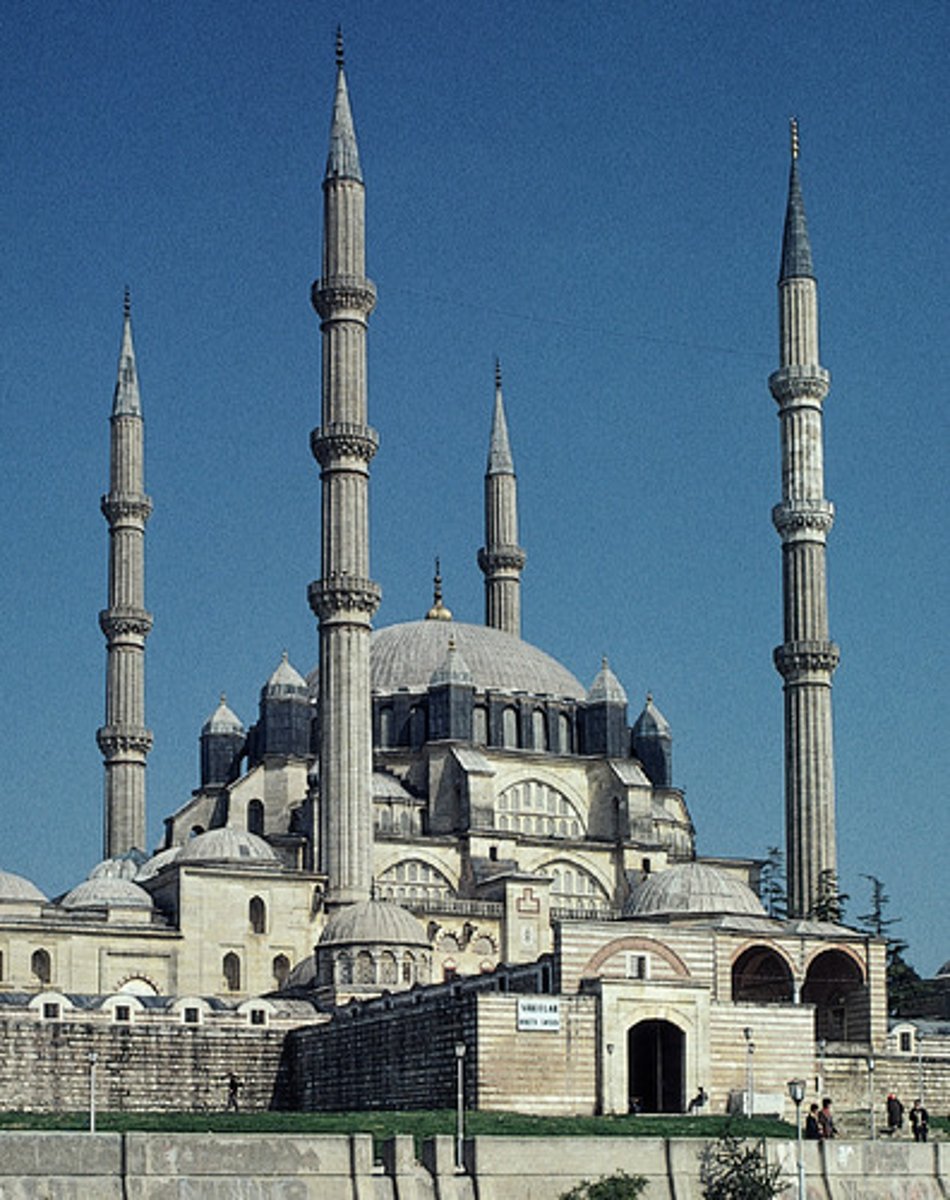
minaret
a tower where a muezzin calls people to worship
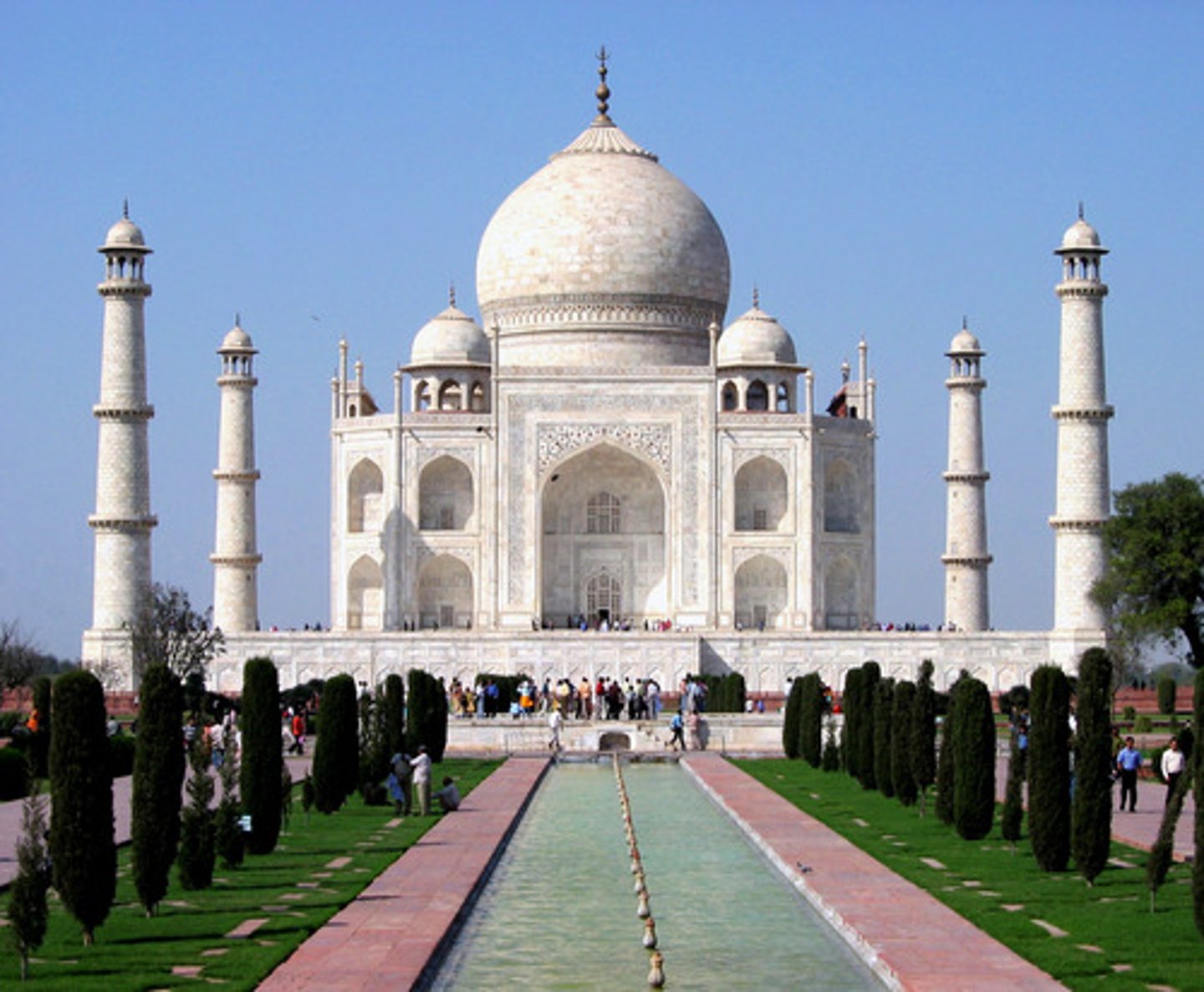
pagoda
Buddhist religious building

Golden Temple of Amritsar
Sikhism's most holy structure built by Arjan, the fifth guru, in the Punjab, a region in India
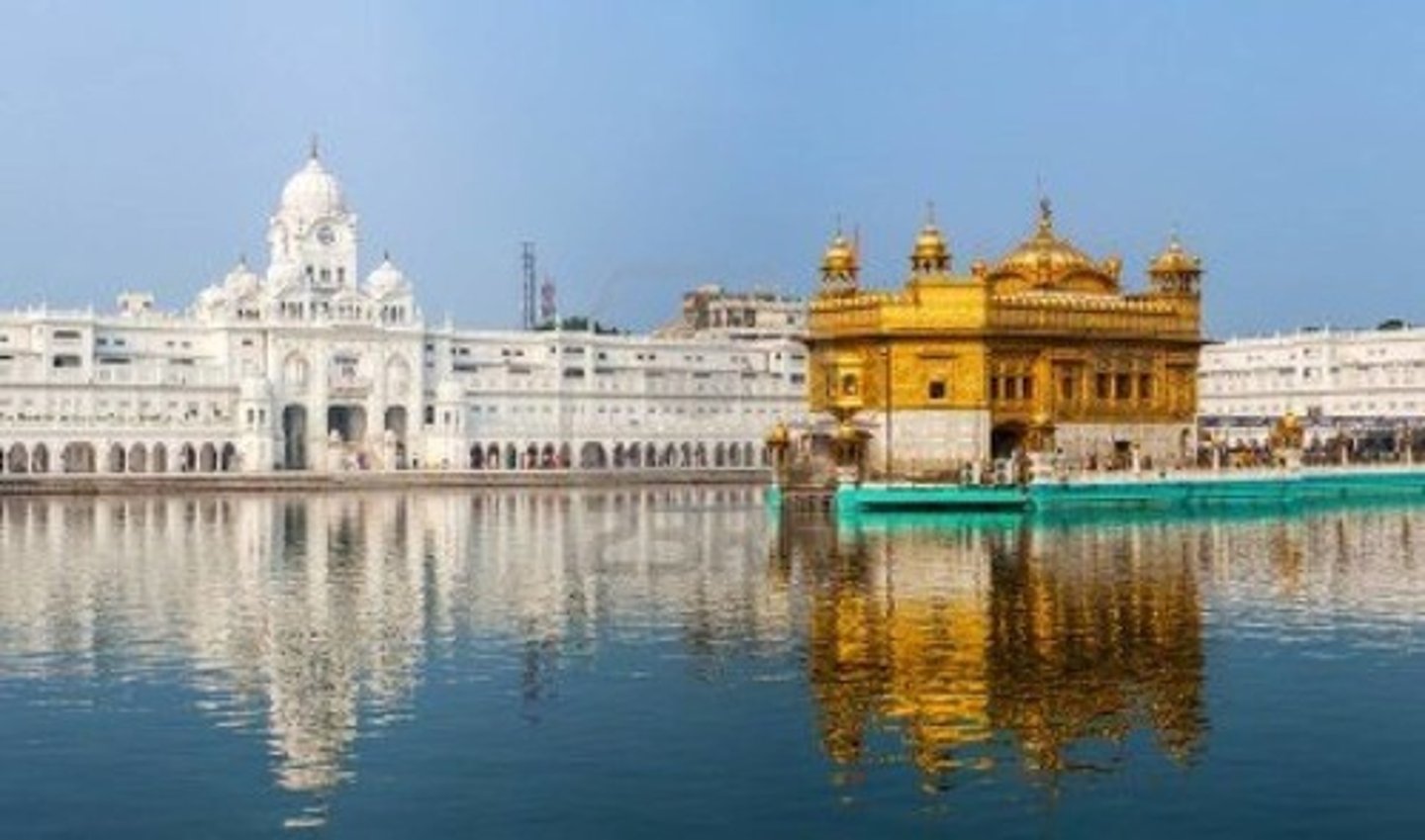
pilgrimage
a journey for religious purposes to a place considered sacred
hajj
a Muslim pilgrimage to mecca
common
a green open space in the middle of a town, usually near a church; they are frequent in New England and were inspired by utopian settlements
standard language
a dialect that is well established and widely recognized as the most acceptable for government, business, education, and mass communication.
Received Pronunciation (RP)
the standard dialect of British English, commonly used by broadcasters, politicians, actors, etc. It was the dialect used by upper-class residents in the capital city of London and the two important university cities of Cambridge and Oxford. It was diffused via the introduction of the printing press and grammar books and dictionaries
Valencian
a dialect of Catalan spoken mostly in and around the city of Valencia, Spain. Some argue that it is a separate language.
Balear
a dialect of Catalan spoken in the Balearic Islands, including Ibiza and Majorca
Austronesian
A language family spoken by about 6 percent of the world's people, who are mostly in Indonesia, the world's fourth-most-populous country. It's biggest language is Javanese, spoken by 85 million people, mostly on the island of Java.
Austro-Asiatic
A language family spoken by about 2 percent of the world's population and based in Southeast Asia. Vietnamese is the most-spoken tongue of this language family and is written with our Roman alphabet.
Tai Kadai
This family was once classified as a branch of Sino-Tibetan. The principal languages of this family are spoken in Thailand and neighboring portions of China. Similarities with the Austronesian family have lead some linguistic scholars to speculate that people speaking these languages may have migrated from the Philippines.
Japanese
Written in part in Chinese logograms, this language family/language also uses to systems of phonetic symbols, like Western languages, used either in place of the logograms or alongside them. Chinese cultural traits have diffused into this society, including the original writing form of this language. But the structures of the two languages differ.
Korean
Unlike Sino-Tibetan languages and Japanese, this language/family is written not with logograms but with a system known as hankul (AKA: hangul or onmun). In this system, each letter represents a sound, as in Western languages. More than half of the vocabulary of this language/family derives from Chinese words.
Altaic
This language family is thought to have originated in the steppes bordering the Qilian Shan and Altai mountains between Tibet and China. Present distribution covers an 8,000 km (5,000 mile) band of Asia. The language with the most speakers in this family is Turkish.
When the Soviet Union governed most of the _______________-speaking region of Central Asia , use of ________________ languages was suppressed to create a homogenous national culture. With the dissolution of the Soviet Union in the early 1990s, __________ languages became official languages in several newly independent countries, including Azerbaijan, Kazakhstan, Kyrgystan, Turkmenistan, and Uzbekistan.
Uralic
Estonia, Finland, and Hungary all speak languages in this family. Once thought to be linked to Altaic family, but recent studies point to geographically distinct origins. _________ languages are traceable back to a common language, Proto-____________, first used 7,000 years ago by people living in the Ural Mountains of present-day Russia, north of the Kurgan homeland. Migrants carried ___ languages to Europe, carving out homelands for themselves in the midst of Germanic- and Slavic-speaking people and retaining their languages as a major element of cultural identity.
Nilo-Saharan
Languages of this family are spoken by a few million people in north-central Africa, immediately north of the Niger-Congo language region. Divisions within this family exemplify the problem of classifying African languages. Despite having relatively few speakers, this family is divided into six branches, plus numerous groups and subgroups. The total number of people speaking a language from this family is extremely small.
Khoisan
A distinctive characteristic of this language family is the use of clicking sounds. Upon hearing this, whites in southern Africa derisively and onomatopoeically named the most important of these languages, "Hottentot."
Germanic Branch
-Part of Indo-European family
- Includes: West Germanic group, which is further divided into High Germanic and Low Germanic subgroups, so named because they are found in high and low elevations within present-day Germany. High German, spoken in the southern mountains of Germany, is the basis for the modern standard German language. English is classified in the Low Germanic subgroup of the West Germanic group.
- Other Low Germanic languages include Dutch (Belgium) and Afrikaans (South Africa)
-Frisian (some people in Netherlands)
_ALSO North Germanic group (Scandanavian languages--Swedish, Danish, Norwegian, and Icelandic)
Indo-Iranian Branch
Branch of Indo-European that includes more than 100 individual languages; has the most speakers of any Indo-European branch. It is divided into two groups: eastern (Indic) and western (Iranian)
Indic (Eastern) Group
Group of Indo-Iranian Branch of Indo-European. 1 billion people in India speak a language from this group. Hindi is a large language from this group. Hindi is written using Devanagari. Hindi is a lingua franca in India, and many people speak smaller languages and use Hindi to communicate with people from farther away.
Iranian (Western) Group
Group of Indo-Iranian Branch of Indo-European family--languages from this family are spoken in Iran and neighboring countries in Central Asia. Major group languages include Persian in Iran, Pashto in eastern Afghanistan and western Pakistan, and Kurdish, used by the Kurds of western Iran, northern Iraq, and eastern Turkey. These languages are written in the Arabic alphabet.
Balto-Slavic Branch
The main language of this Branch, Slavic, was once a single language, but differences developed when several groups of Slaves migrated from Asia to different areas of Eastern Europe and thereafter lived in isolation from one another. As a result , this branch can be divided into East, West, and South Slavic groups as well as the Baltic group.
East Slavic and Baltic Groups
The most widely used languages in this group are the eastern ones, primarily Russian, which is spoken by more than 80 percent of the Russian people. Russian is one of the six official languages of the United Nations.
- ALSO: Ukranian and Belarusan languages
Romance Branch
This branch evolved from Latin language spoken by the Romans 2,000 years ago. The four most widely used languages of this branch are Spanish, Portuguese, French, and Italian
German Invasion
The Angles, Jutes, and Saxons invaded the British Isles and brought German with them.
Norman Invasion
The Normans, from present-day Normandy in France, invaded and conquered the British Isles in 1066, bringing French with them and into the English language
New England English dialect
the dialect of those who settled in colonies in and above present-day New Jersey. Two-thirds of these colonists were Puritans from East Anglia in southeastern England, and only a few came from the north of England.
language
a system of communication through speech, a collection of sounds that a group of people understands to have the same meaning
logograms
symbols that represent words, or meaningful parts of words, rather than sounds; many of the Chinese Sino-Tibetan languages use these
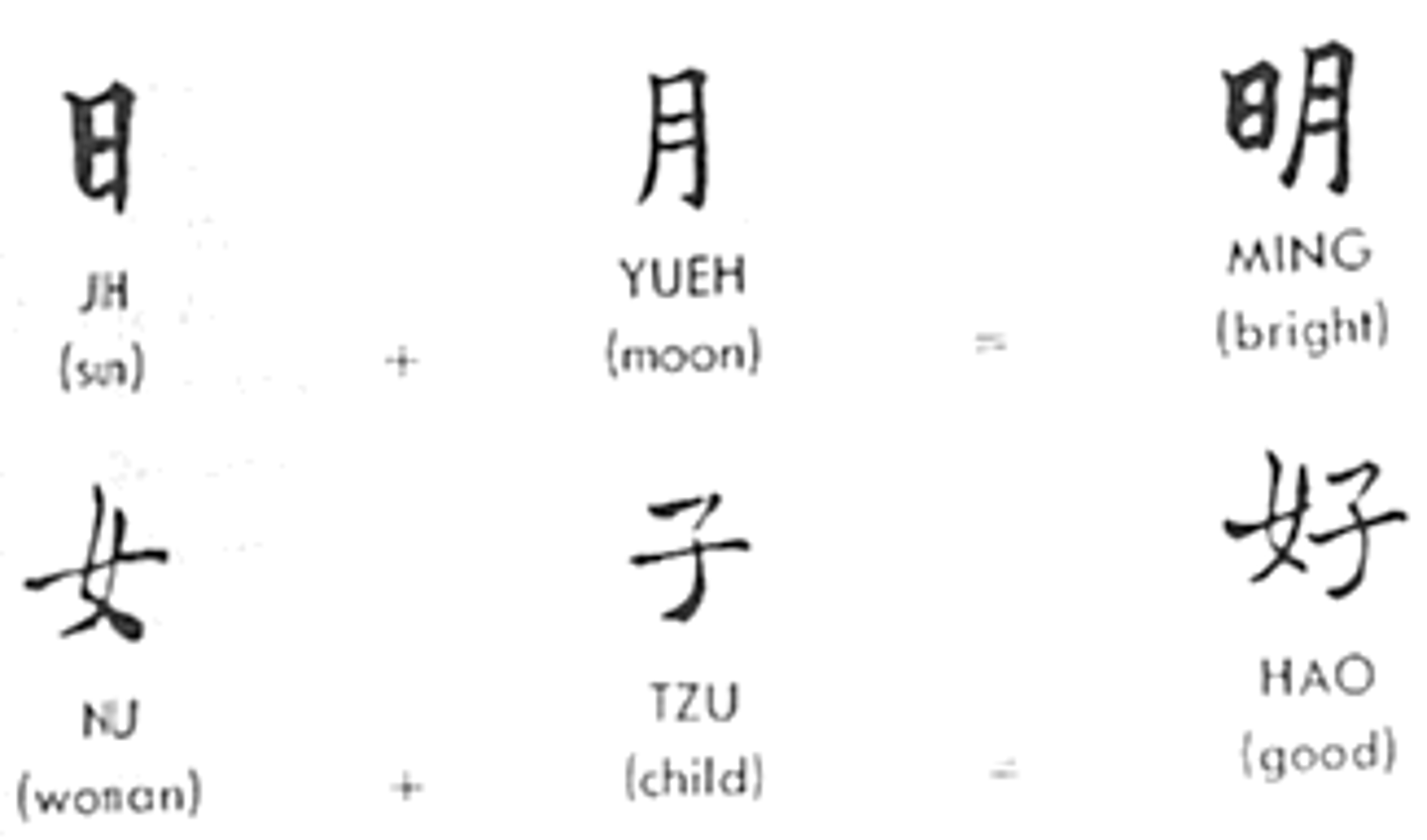
habit
a repetitive act performed by a particular individual
taboo
a restriction on behavior imposed by social custom
animism
most prevalent in Africa and the Americas, doctrine in which the world is seen as being infused with spiritual and even supernatural powers
artifact
any item that represents a material aspect of culture
cultural hearth
locations on earth's surface where specific cultures first arose
cultural imperialism
the dominance of one culture over another
cultural trait
the specific customs that are a part of everyday life a particular culture, such as language, religion, ethnicity, social institutions, and aspects of popular culture
culture
comprises the shared practices, technologies, attitudes, and behaviors transmitted by a society
Afro-Asiatic
A large language family found primarily in North Africa and Southwest Asia.
Includes Arabic
acculturation
when a culture is substantially changed through interaction with another culture
relocation diffusion
the spread of a cultural trait by people who migrate and carry their cultural traits with them.
universalizing religions
A religion that attempts to appeal to all people, not just those living in a particular location.
assimilation
the process through which people lose originally differentiating traits, such as dress, speech, particularities, or mannerisms when they come into contact with another society or culture
ethnic religions
focus on one ethnic group and generally have not spread into other cultures
contagious diffusion
occurs when a cultural trait spreads continuously outward from its hearth through contact among people
cultural relativism
the idea that a person's beliefs, values, and practices should be understood based on that person's own culture, rather than be judged against the criteria of another.
Nomadic Warrior Hypothesis
theory of the diffusion of the Proto-Indo-European language into Europe through the speakers' overpowering of earlier inhabitants through warfare and technology
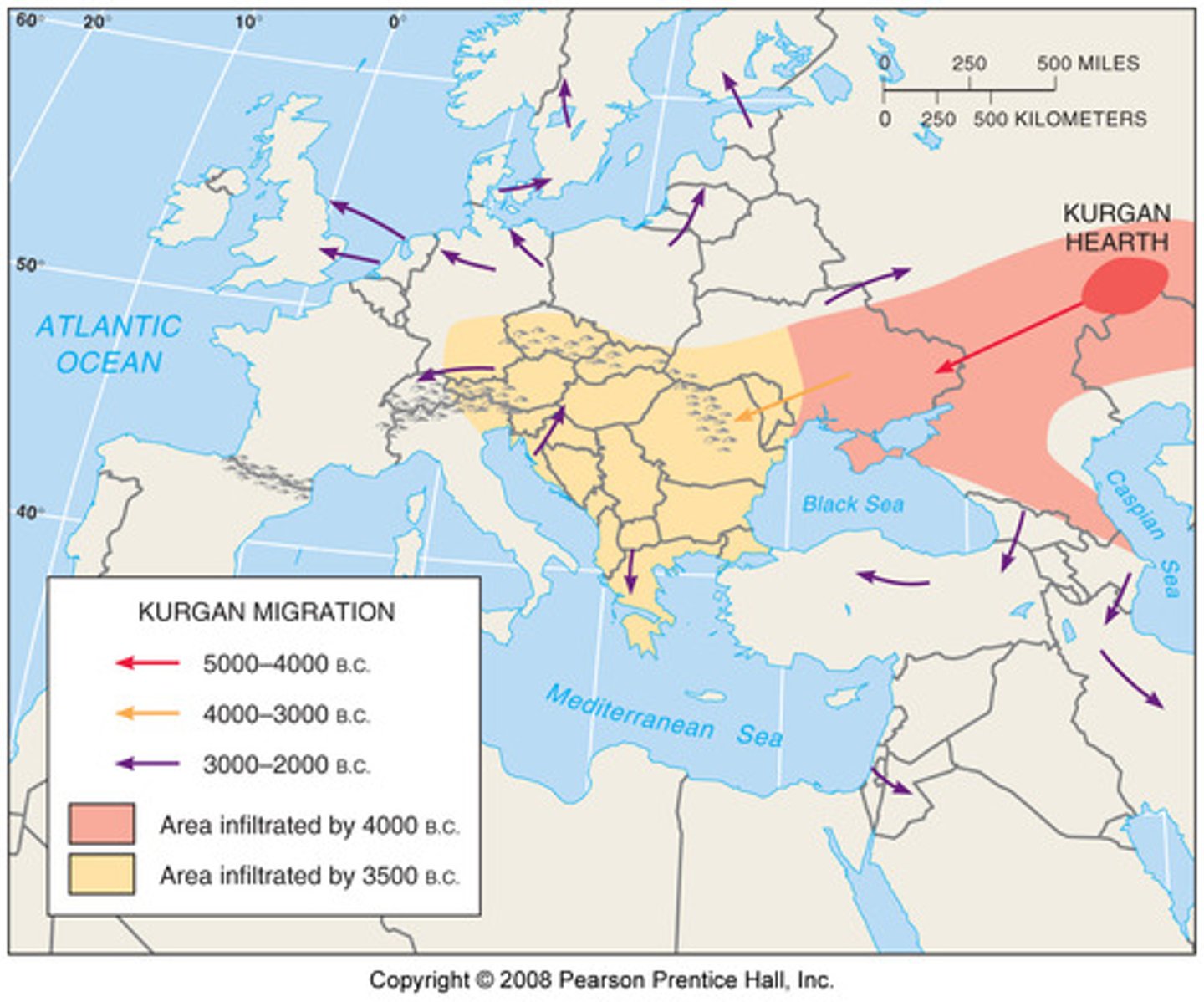
expansion diffusion
The spread of a feature or trend among people from one area to another in a snowballing process.
1. contagious
2. hierarchical
3. stimulus
ethnocentrism
Belief in the superiority of one's nation or ethnic group.
Sedentary Farmer Hypothesis
Colin Renfrew and Russell Gray; lived 2,000 yrs before Kurgans; E. Anatolia (Turkey); to Greece, then west towards italy, france, spain; diffuse by agricultural practices; isolation caused diff languages
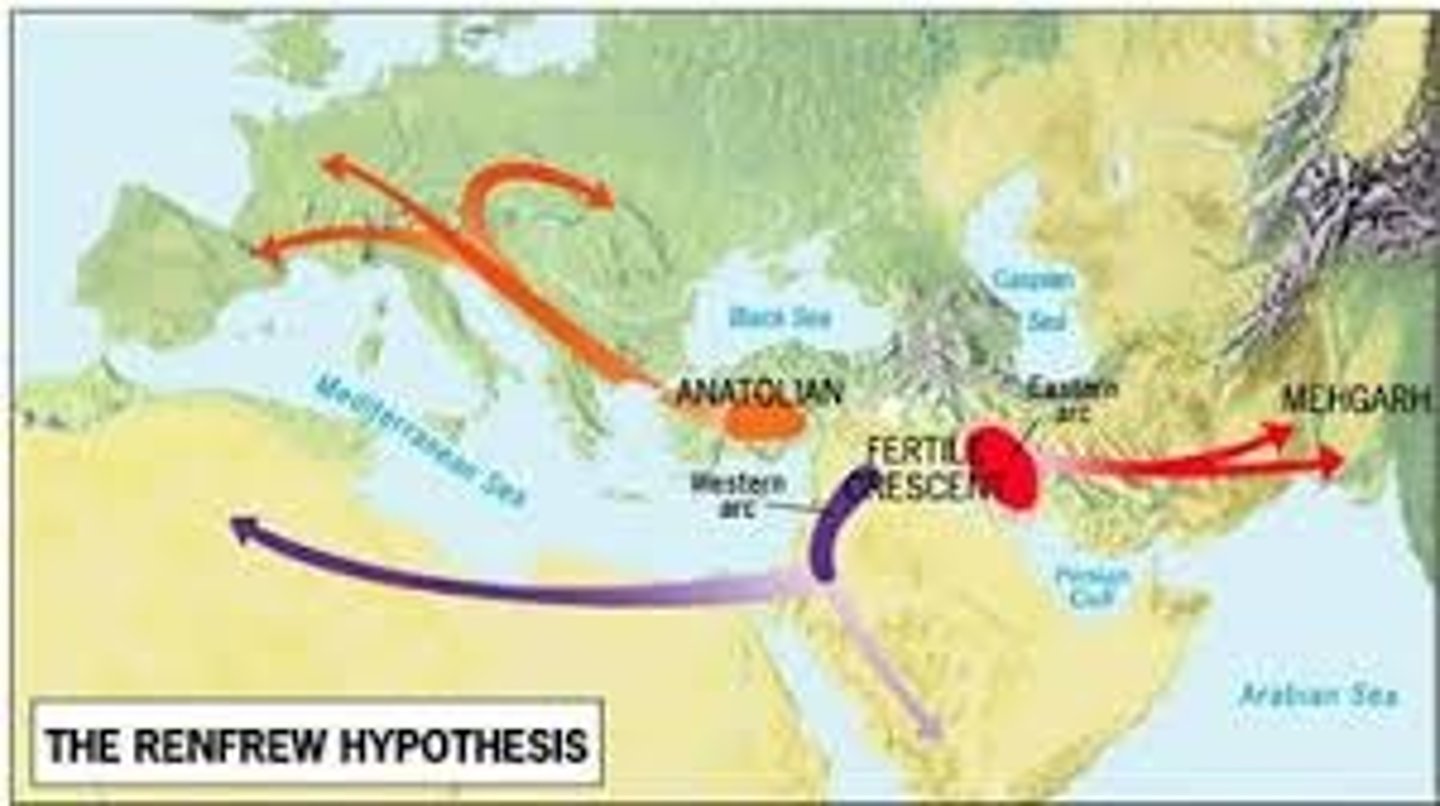
hierarchical diffusion
the spread of a feature or trend from one key person or node of authority or power to other persons or places
multiculturalism
the idea that different cultures in a society deserve value and respect for unique differences
cultural complex
The group of traits that define a particular culture.
cultural preservation
the act of using deliberate and well-designed methodologies to maintain cultural heritage from the past for the benefit of the present and future generations
Origin of English
Around A.D. 450, Germanic tribes such as the Jutes, Angles, and Saxons invaded England and their language diffused.
reverse hierarchical diffusion
diffusion up a hierarchy, such as from a small town to large cities

culture hearth
a center where cultures developed and from which ideas and traditions spread outward
multilingual states
countries in which more than one language is spoken